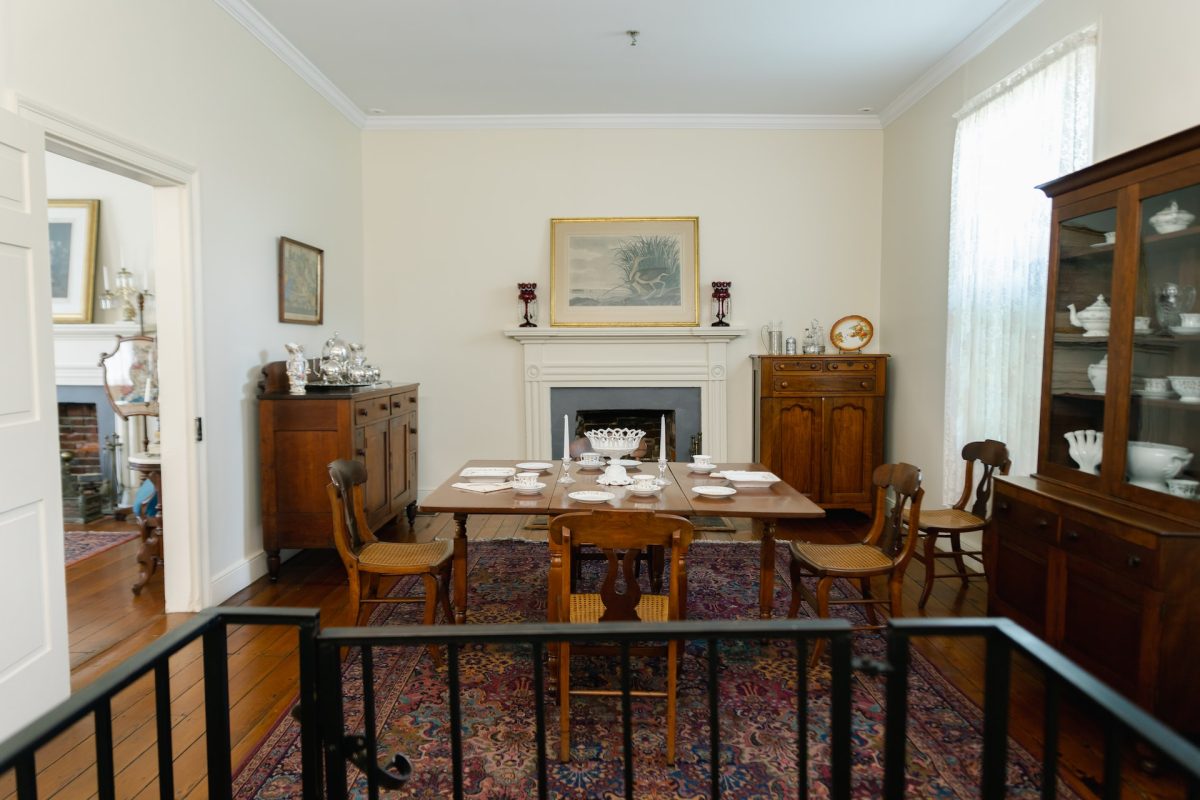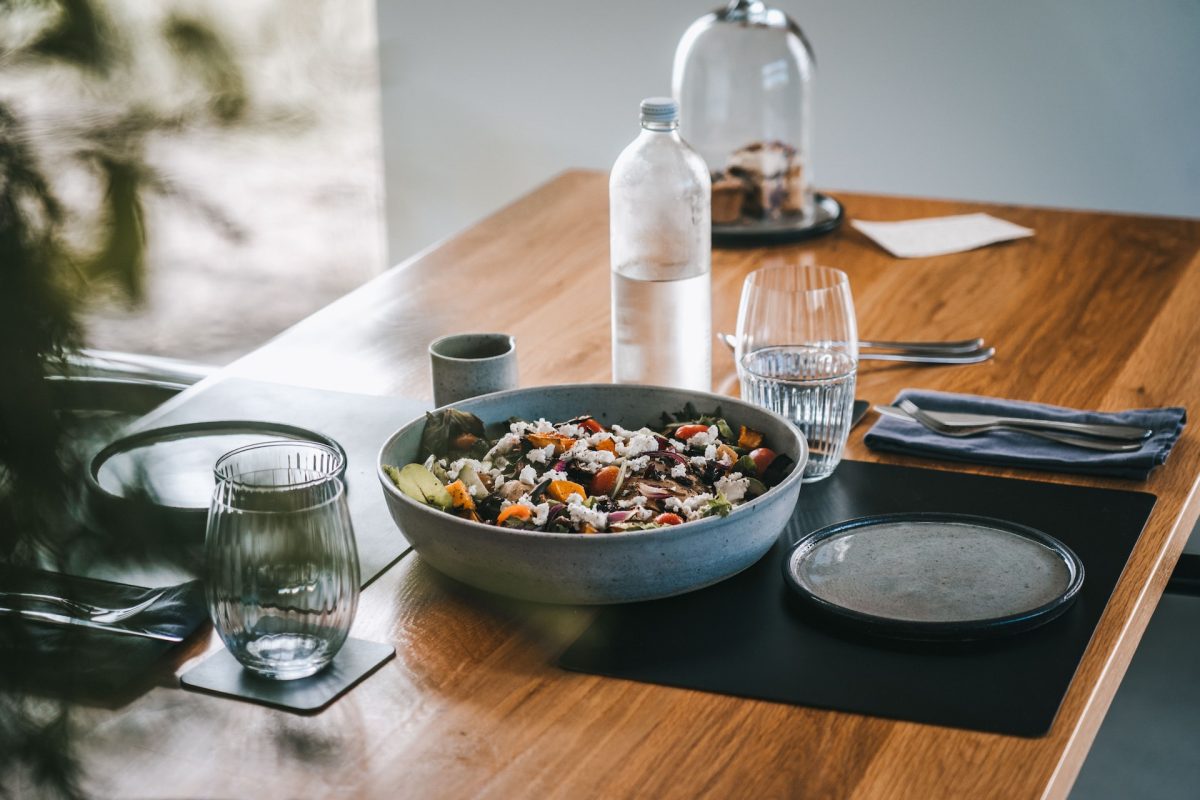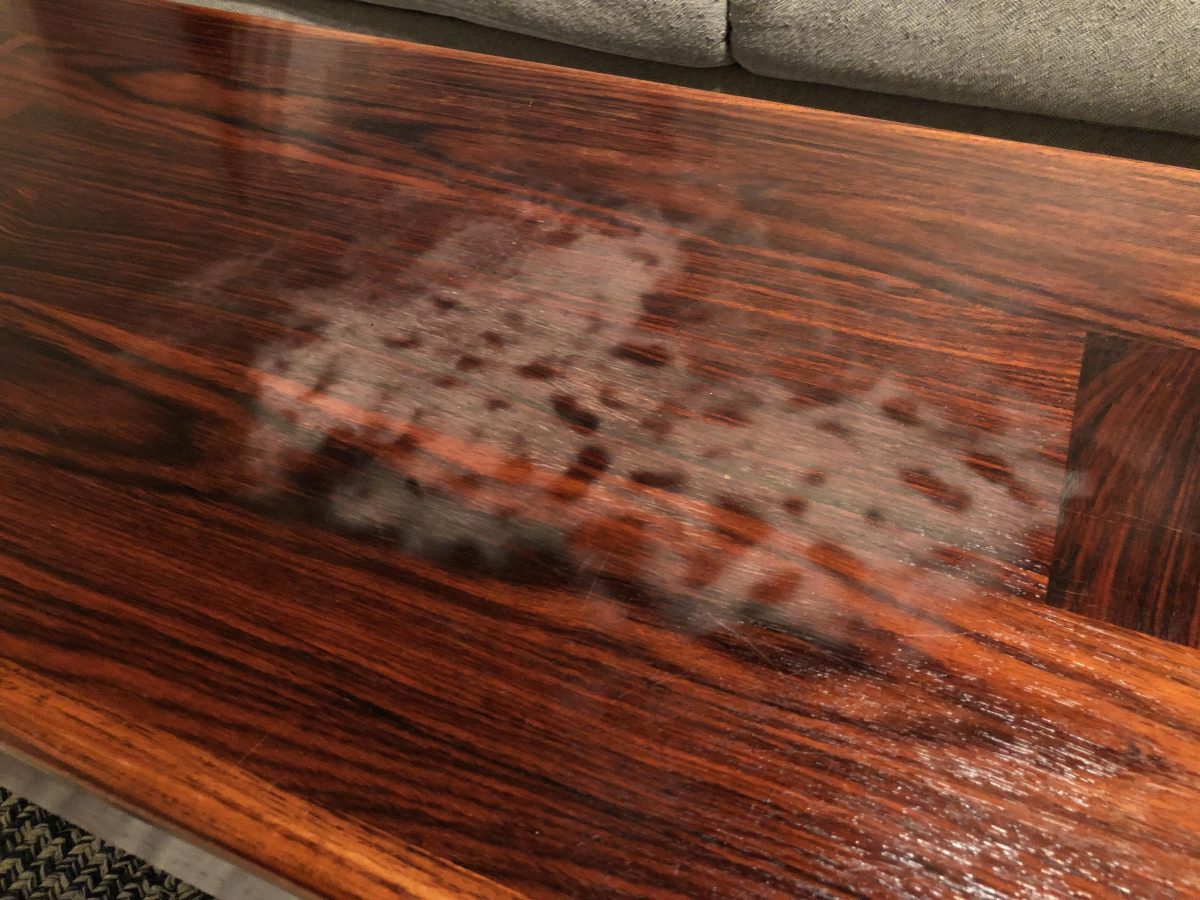Fixing heat stains on wood is not as tricky as it may seem. It’s a simple fix that you can tackle yourself to remove the white stains. Heat stains are the result of setting hot items on your wood furniture. If you own wood furniture in your home, encountering heat stains becomes a “when”, not an “if”.

The heat softens the clear coat finish and allows moisture to enter between the finish and the wood. When it cools, the clear coat resets and traps the moisture, causing fogging. This is called either a lifted finish or blushed finish, depending on who you’re talking to.
This is such a common problem, Larry David built a whole comedy bit about it in his show Curb Your Enthusiasm, and it is amazing.
Table of Contents
Types of Finish and Heat Damage
Before fixing the blush, you need to identify the type of finish on the wood. Certain methods will either not work or make the damage worse.
It can get tricky sometimes trying to determine the finish type on an item. If you’re unsure whether it’s a polyurethane, lacquer or varnish, etc then it complicates the issue. In my experience, manufacturers tend to stick with lacquered finishes. They are quick, easy to apply, and produce a hard durable finish in a variety of sheens/gloss levels.
The older a piece of furniture gets, the more varied the finishes may be and that’s when a pro can really help. So with that said, I would bet that your tabletop, assuming it isn’t an antique, has a lacquered finish and my approach wouldn’t change.

A lot of restaurants and retail settings will use a polyurethane finish, which is highly resistant to this kind of damage. For the most part, this simply doesn’t happen from hot dishes on poly, which can take a lot of abuse. You can identify this finish easily on those restaurant tables with the high gloss thick finish.
Here is one such example of a heat stain on a lacquered finish.

The first thing you’ll want to do before trying any of these steps to repair the heat stain is to wait 3 to 4 days and see if it will disappear on its own.
Professional Wood Products
Mowhawk’s No-Blush Plus Retarder aerosol can is a great product to use for this example of damage. Shake the can, spray it on, and walk away. Check the next day and the blushed effect should be completely gone. If not, apply an additional light coat. Several applications are sometimes needed depending on the age of the furniture and its finish.
No-Blush will not work on resistant coatings like polyurethane or conversion varnish. It will not work on water base coatings and it can cause irreparable damage.
So what will it work on? Generally, lacquer or shellac, which are a lot more sensitive to heat damage like this anyways.
It has taken a couple of applications to repair older items but there isn’t a limit to how many applications you can do. Each time should pull more of the moisture out. Just ensure the clear coat has fully “cured” again between applications. Usually, 24hrs is enough time in between but your unique temp and humidity conditions will decide that.
Iron and Towel Trick
An old trick many people have used successfully is to use a dish towel and iron to remove the blushing. It is important to make sure there is no steam coming from the iron for this method and the towel is completely dry.
The key thing here is that heat caused the finish to let moisture in, and you’re using heat again to let it out. So make sure when you’re done with an area not to keep it covered again while it’s hot as it may cause it to retain humidity again.
Dish towel over the spot and the iron in quick passes over the area. Took breaks every 5 or six passes to check. Maybe start by checking every pass.
The water/steam is trapped under the finish. The heat helps it evaporate. I also did this to get a steam mark out of our stainless steel stove.
You can also use a hair dryer or heat gun in lieu of an iron.
Sand and Refinish
If the No-Blush or other methods don’t work, your next step is going to be to sand the layer of clear coat off and recoat it. Here’s one such table I was unable to repair easily due to both heat stains and water rings and had to refinish the entire thing.



Final Steps and After Care
After fixing your heat-stained finish, apply a final touch with Howard’s Restor-A-Finish, and 0000 Steel Wool or a microfiber rag. Follow directions on the finish, making sure to always go in the direction of the grain. Finally apply Howard’s Feed N Wax.
For the future, make sure to leave some extra coasters lying about for both yourself and visitors. Be diligent about using trivets, whether silicone or metal or something else, to protect your wood furniture from heat stains.
- About the Author
- Latest Posts
I strive to paint vivid landscapes with my words, bringing the magic of far-off lands and enchanting aromas to life for my readers. Combine passion for exploration and the art of gastronomy in an unending ode to the senses. When I’m not traversing the globe, I find solace in the earth beneath my fingertips, tending to my garden and working on projects around my verdant oasis. MK Library serves as a beacon, guiding fellow travelers and homebodies alike to embrace sustainability, nurturing both our planet and our souls with purpose. Full Bio.

